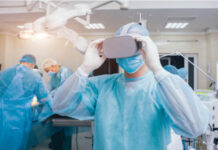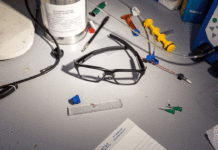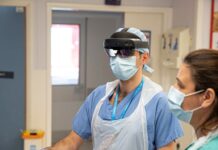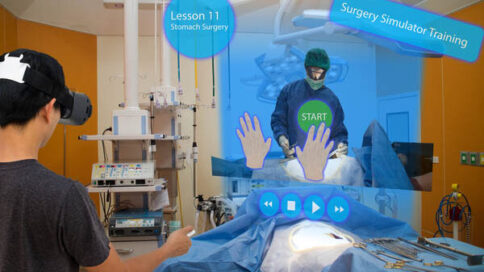
One of the worst things a doctor can tell you is that you have a malignant tumor in your body. We put all of our trust in the surgeon’s hands when he tells us that he will be able to remove the tumor completely. There is always, however, the slight chance that the tumor might be in an uncomfortable position or in a place that is difficult for a doctor to get to. Luckily with augmented reality on the rise and AR tech already being used in many industries, the medical field can now also incorporate AR apps to perform accurate surgery.
The Fraunhofer Institute for Computer Graphics Research IGD in Darmstadt, Germany recently collaborated with The Clinic for Dermatology at Essen Hospital in Essen, Germany. Together with Trivisio Prototyping GmbH they have successfully developed the latest innovation in AR aimed at the medical field. The 3D-ARILE is an augmented reality system that provides doctors with navigation aid to remove lymph nodes. This revolutionary system superimposes a virtual image of the precise position of the lymph nodes using data glasses. It allows doctors to identify the lymph nodes which enables them to remove them completely.
This AR system consists of hardware and powerful medical navigation software which is specifically designed to assist medical professionals in the removing of tumors. It is similar to AR tech found in other industries but it emphasizes the flexibilities of modern-day AR devices. The data glasses include an integrated camera and two displays. It also includes an infrared display and two visual cameras. These four devices are combined into a cube-shaped unit that is then suspended over the operating table during surgery. It allows the doctor to continue with a more precise technique when operating.
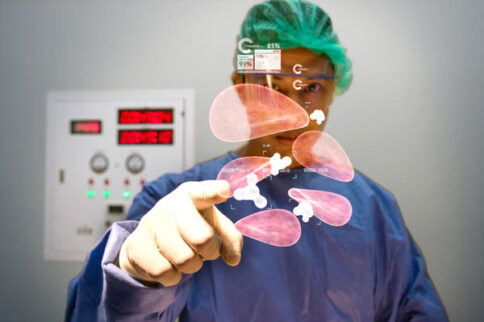
The software also includes an image processing system. This detects fluorescent lights emitted by lymph nodes and uses the data to calculate their 3D coordinates. The position of the lymph nodes is then displayed in the glasses worn by the doctor. It allows the doctor to have access to real-time data without having to stop the procedure or having to tend to a different device. Wherever the coordinates guide the doctor is where he will perform the surgery. It has established a unique experience for doctors and allows patients to be treated with the accuracy that comes with AR technologies.
IT software also forms the core part of the system and performs the necessary calibration. Sophisticated algorithms are paired with the software to perform calculations on the data extracted from the camera images. The entire device can be controlled through the 3D-ARILE and it also includes a user interface for the surgeon to use. Researches from the respective institutes have conducted several tests to ensure that the AR glasses are light and comfortable enough for a doctor to wear while under the pressure of surgery. A prototype of the 3D-ARILE will be presented to the public at the Medica Trade Fair in Dusseldorf in November 2017.
November 4, 2017

